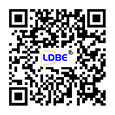Near infrared spectrometer
Near-infrared spectrometer technology principle
The near-infrared spectrum is mainly generated when the molecular vibration transitions from the ground state to a high energy level due to the non-resonant nature of the molecular vibration. What is recorded is mainly the frequency doubling and combined frequency absorption of the vibration of the hydrogen-containing group X-H (X=C, N, O). . Different groups (such as methyl, methylene, benzene rings, etc.) or the same group have obvious differences in the near-infrared absorption wavelength and intensity in different chemical environments.
Near-infrared spectroscopy has rich structural and compositional information and is very suitable for measuring the composition and properties of hydrocarbon organic substances. However, in the near-infrared spectrum region, the absorption intensity is weak, the sensitivity is relatively low, and the absorption bands are wide and overlap seriously. herefore, it is very difficult to conduct quantitative analysis relying on the traditional method of establishing a working curve. The development of chemometrics has laid a mathematical foundation for solving this problem. It works on the principle that if the sample‘s composition is the same, its spectrum will be the same, and vice versa. If we establish the correspondence between the spectrum and the parameters to be measured (called an analytical model), then as long as the spectrum of the sample is measured, the required quality parameter data can be quickly obtained through the spectrum and the above correspondence.
How to measure near infrared spectroscopyLike conventional molecular absorption spectrometry analysis, measuring the transmission spectrum of solution samples in near-infrared spectroscopy technology is one of its main measurement methods. In addition, it is also commonly used to directly measure the diffuse reflectance spectrum of solid samples, such as flakes, granules, powders, and even viscous liquid or paste samples. In the field of near-infrared spectroscopy, commonly used measurement methods include transmission, diffuse reflection, diffuse transmission, and transflectance.
1. Transmission mode
Like other molecular absorption spectra, the measurement of near-infrared transmission spectrum is used for clear, transparent and uniform liquid samples. The most commonly used measurement accessory is a quartz cuvette, and the measurement index is absorbanceThe relationship between spectral absorbance, optical path length and sample concentration is consistent with Lambert-Beer‘s law, that is, the absorbance is directly proportional to the optical path length and sample concentration. This is the basis for quantitative analysis of near-infrared spectroscopy.
The sensitivity of near-infrared spectroscopy is very low, so it is generally not necessary to dilute the sample during analysis. However, solvents, including water, have obvious absorption of near-infrared light. When the optical path of the cuvette is too large, the absorbance will be very high, even saturated. Therefore, in order to reduce analysis errors, the absorbance of the measured spectrum is best controlled between 0.1-1, and cuvettes of 1-10 mm are generally used. Sometimes for convenience, near-infrared spectroscopy measurements with absorbance as low as 0.01, or as high as 1.5, or even 2 are often seen.
2. Diffuse reflection mode
The outstanding advantages of near-infrared spectroscopy technology, such as non-destructive measurement, no need for sample preparation, simplicity and speed, etc., mainly stem from its diffuse reflection spectrum collection mode. The diffuse reflection mode can be used for the measurement of solid samples such as powders, blocks, sheets, and silk, as well as semi-solid samples such as pastes and pastes. The sample can be in any shape, such as fruit, tablets, cereals, paper, dairy, meat, etc. No special sample preparation is required and can be measured directly.
Near-infrared diffuse reflection spectrum does not comply with Lambert-Beer‘s law, but previous studies have found that the absorbance of diffuse reflection (actually the negative logarithm of the ratio of sample reflectance to reference reflectance) and concentration have a certain relationship under certain conditions. For a linear relationship,under certain conditions. For a linear relationship, the conditions that need to be met include the sample thickness being large enough, the concentration range being narrow, the physical state of the sample and the spectral measurement conditions being consistent, etc. Therefore, using diffuse reflectance spectroscopy can also be used for quantitative analysis using multivariate correction like transmission spectroscopy.
3. Diffuse transmission mode
Diffuse transmission mode is a transmission spectrum measurement of a solid sample. When incident light irradiates a solid sample that is not too thick, the light is transmitted and diffusely reflected inside the sample, and finally passes through the sample and records the spectrum on the spectrometer. This is the diffuse transmission spectrum. The diffuse transmission mode is often used for near-infrared spectroscopy measurements of tablets, filter paper samples, and thin layer samples. Its spectral absorbance has a linear relationship with component concentration.
4. Transflective mode
The transmission spectrum measurement of a solution sample is to pass the incident light through the sample and measure the transmission spectrum on the other side. Different from this, in the transflective mode, a reflective mirror is placed behind the sample solution. The incident light passes through the sample and is reflected by the mirror before entering the sample solution again. The transflective spectrum is measured on the same side of the incident light. Light passes through the sample twice, so the optical path length is twice that of a normal transmission spectrum. The transflective mode is designed for the convenience of measuring spectra. Because the incident light and reflected light are on the same side, you can install both the incident light path and the reflected light path in one probe, and install a cavity at the front end of the probe. The top is a reflector. When in use, the probe is inserted into the solution, the solution enters the cavity, the light shines into the solution from the incident light path, is reflected back to the solution on the reflector, and then enters the reflected light path and enters the spectrometer to measure the spectrum. In essence, the transmission and reflection spectrum is also a transmission spectrum, so its absorbance has a linear relationship with concentration.







